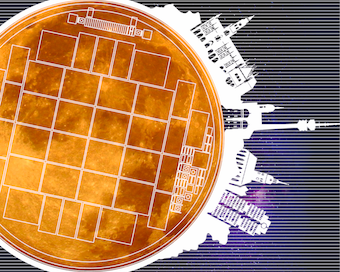Speaker
Description
Since 2014, within the framework of the INFN-FBK “Phase 2” R&D program and the AIDA 2020 project, FBK has developed a new generation of small-pitch, thin 3D pixel sensors oriented to the innermost tracking layers of ATLAS and CMS at the High-Luminosity LHC (HL-LHC). Sensors are made on either Si-Si Direct Wafer Bonded or SOI 6” substrates with a single-sided technology, while ensuring the bias be applied from the back side. Sensors feature a thin active region (~100 $\mu$m), narrow electrodes (~ 5 $\mu$m), reduced electrode spacing (down to ~ 30 $\mu$m), and very slim edges (~ 50 $\mu$m). Two batches were fabricated so far, including several different pixel designs compatible both with present (e.g., FEI4) and future (e.g., RD53A) read-out chips.
More recently, in the framework of the INFN TIMESPOT project, FBK has started the development of a modified technology for 3D pixel sensors optimized for timing applications. In order to ensure the most uniform electric field distribution necessary to improve the timing properties, 3D pixels based on trench electrodes are being explored, and technological tests are under way to investigate possible process constraints for their manufacturability.
The talk will cover technological aspects and experimental results from the electrical characterization of sensors and test structures.
